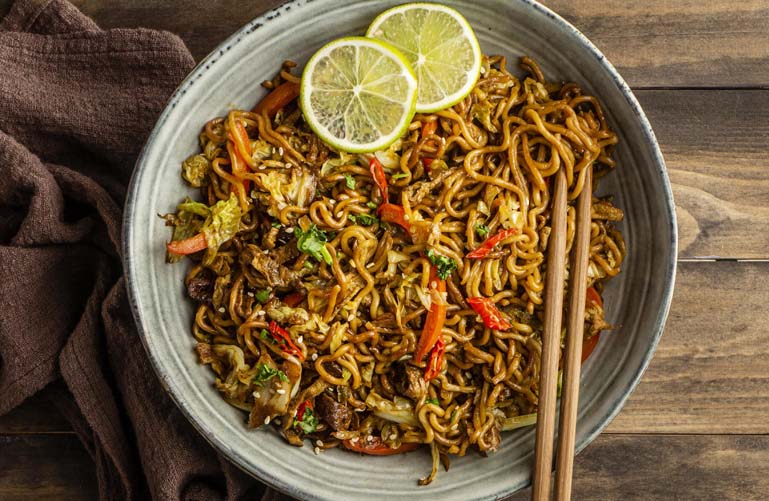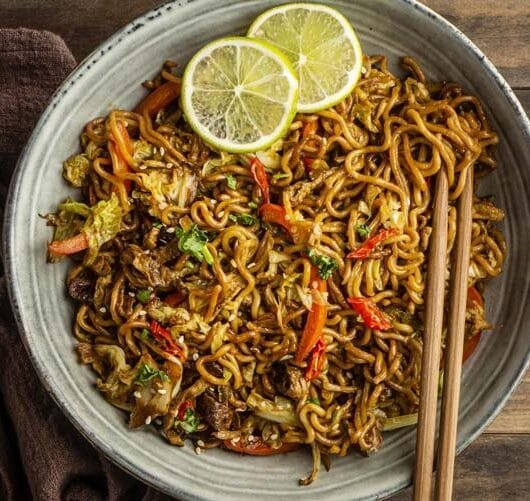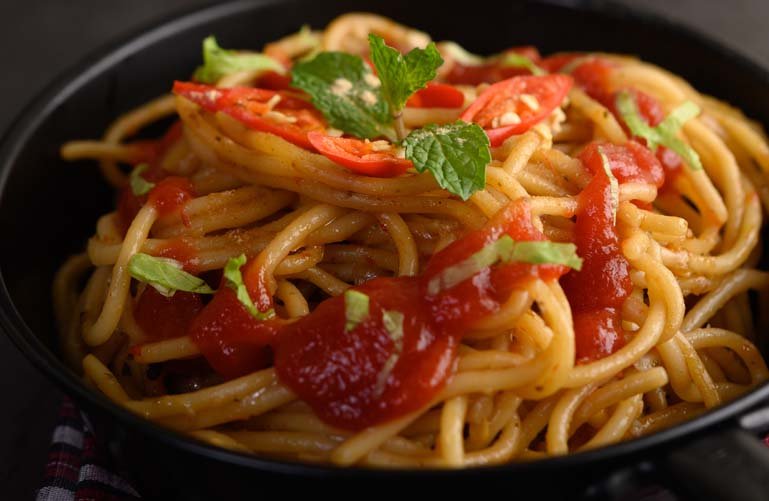Pad Thai is one of the best-known dishes in Thai cuisine. This is a recipe for stir-fried rice noodles with a sweet and sour sauce and a variety of vegetables, proteins and nuts. This version uses tofu and bean sprouts to make it vegan, and it's served with roasted peanuts and lime wedges for a touch of extra flavor. It is an easy dish to prepare and full of exotic flavors that will transport you directly to Thailand.

Pad Thai and health benefits
Pad Thai may have some health benefits, depending on how it is prepared and consumed:
- Protein source: Pad Thai may contain shrimp, chicken or tofu, which are lean protein sources. Protein is essential for tissue growth and repair, as well as for the proper functioning of the immune system.
- Carbohydrate sources: The rice noodles in Pad Thai are a source of carbohydrates, which provide energy to the body. The complex carbohydrates present in rice noodles may be a healthier option than refined carbohydrates.
- Vegetables: Some versions of Pad Thai include vegetables such as bean sprouts and cilantro, which add nutrients and fiber to the meal. Vegetables are rich in vitamins, minerals and antioxidants, which are beneficial for general health.
Despite these possible benefits, it is important to note that Pad Thai is usually cooked with oil and fish sauce, which can increase its calorie content and saturated fat content. Additionally, some places may add extra sugar to the sauce, which should be considered if you are on a low-sugar diet.
To enjoy Pad Thai in a healthier way, you can consider the following options:
- Opt for a vegetarian version or with tofu instead of meat or shrimp.
- Control the amount of oil used when cooking and choose healthier options such as olive oil or coconut oil.
- Control the amount of oil used when cooking and choose healthier options such as olive oil or coconut oil.
- Accompany your plate with a generous portion of vegetables to increase nutrient intake.
Remember that the key to healthy eating is moderation and variety. Although Pad Thai can be enjoyed occasionally as part of a balanced diet, it is important to complement it with other healthier and more nutritious options.
Enjoy Thai style!
Maybe you might like: Condensed Milk Flan
Image credit: freepik



